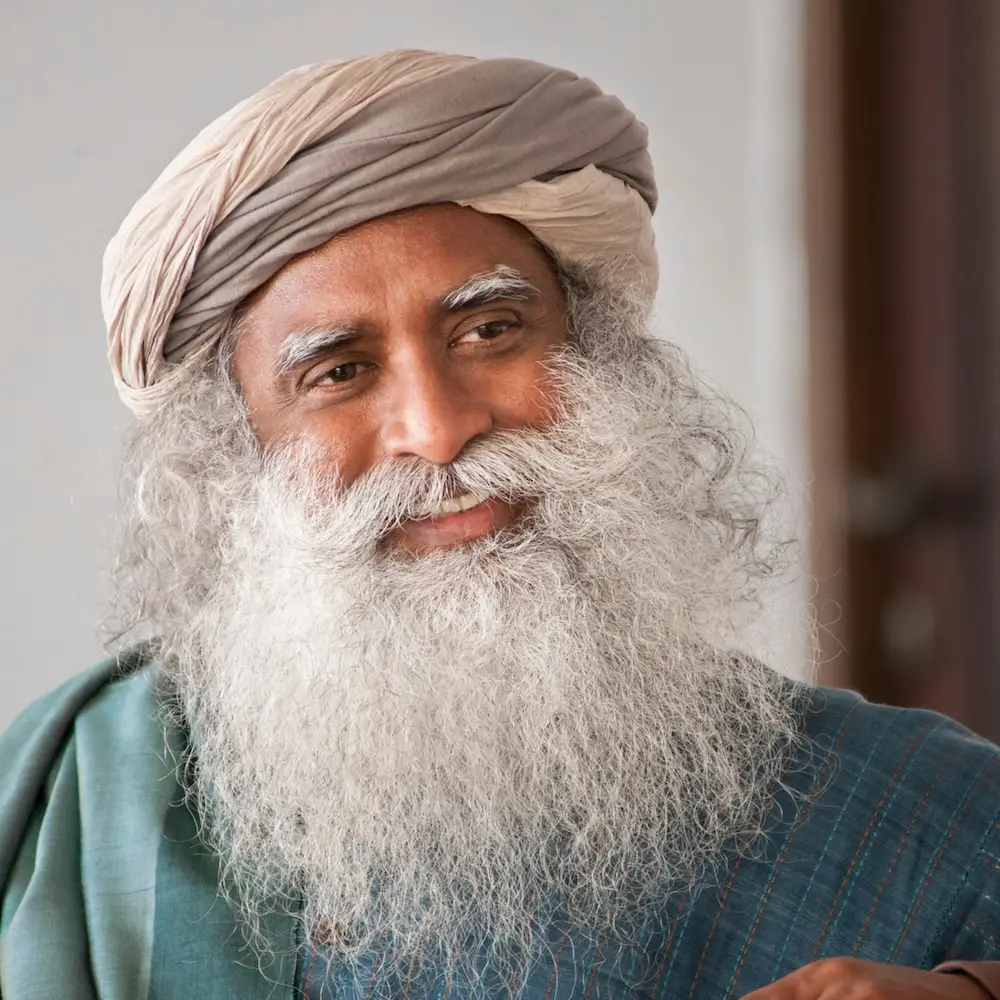Picture this: You’re sitting in the middle of a busy day, feeling the usual weight of life’s demands. Suddenly, without warning, something inside you shifts.
It’s subtle at first—like a warm, gentle hum low in your spine. Then, the feeling grows stronger, spreading upward, almost like a soft current, waking up parts of your body you didn’t even know existed.
It’s exhilarating, maybe even a little strange. It can seem scary at first, but instead, you feel an overwhelming sense of clarity, of knowing something more.
You’ve just experienced the first flicker of a kundalini awakening.
This practice may be ancient, but its power is anything but. Coupled with an open mind and a curiosity about the hidden potential within you, it’s one that can offer profound changes in how you experience yourself and the world around you.
What is a kundalini awakening?
The term “kundalini” comes from a Sanskrit word that means “circular” or “coiled,” often referring to dormant energy located at the base of the spine. A kundalini awakening happens when this energy is activated and rises through your seven chakras.
“Kundalini is that primal life force energy that exists in all things,” says Dawn Hoang, a kundalini activator and spiritual coach, in an episode of The Mindvalley Podcast. She also explains that it is the “highest level of the divine feminine energy,” representing both the creative power of the universe and the transformative force within you.
The kundalini experience is your body’s way of waking up its own innate intelligence. Activating this energy helps you tap into parts of yourself that may have been buried or blocked… and unlock new levels of intuition, healing, and even psychic abilities.
Kundalini awakening vs. spiritual awakening
A kundalini awakening can be a spiritual awakening; after all, both involve expanding your consciousness and connecting with something beyond the everyday. However, they’re not one and the same.
Here’s where they differ:
- Kundalini awakening focuses on activating your life force energy. Dawn mentions that it can feel like a “shaking up” inside of you, bringing physical sensations along with emotional and energetic shifts. It can be an intense, almost electric experience.
- Spiritual awakening, on the other hand, is more of a gradual shift in perspective and awareness. While it may involve insights or ego death (the dissolution of the self), it doesn’t always come with the physical sensations common in kundalini awakening.
No doubt, both awakenings open the door to greater awareness. But when it comes to kundalini, Dawn says you can “start to see yourself in all your energetic bodies—your soul body, your spiritual body, as well as your physical body—aligning.”
Explore more on The Mindvalley Podcast:
What does a kundalini awakening feel like?
A kundalini awakening is a deeply personal and transformative experience that can feel different for everyone. It may bring tingling sensations, heat, or waves of energy moving up your spine. Some describe it as a warm, soothing current, while others liken it to sudden bursts of energy.
For Vishen, the founder and CEO of Mindvalley, his sensation comes in what he calls “ripples”—physical jerks, similar to the motion of hiccups (but without the hiccups themselves). In The Mindvalley Podcast, he describes how his body moved involuntarily, giving him a sense of energy being released in waves.
Dawn explains that a kundalini awakening can take many forms—sometimes spontaneous shakes or shivers, like Vishen experienced, or sometimes a burst of bliss or joy. Some people feel as if they’ve been plugged into a source of energy that surges throughout their entire body.
In fact, a study on spiritually transformative experiences found that 85% of participants described unusual energy flows through their bodies during a kundalini awakening. Many referred to it as a mystical experience, often accompanied by feelings of expansion, light, or even love.
If you’ve ever felt “flow” during a deep conversation, amazing music, or an intense moment of joy, that’s just a glimpse of what a full kundalini experience can be like. It’s not uncommon to feel heightened intuition, clarity about your life’s path, or even sudden insights about things that once confused you.
8 symptoms of a kundalini awakening
This experience can bring about a wide range of symptoms—physical, emotional, and energetic.
“The person that’s facilitating, such as myself, we’re channeling the cosmic kundalini energy, and each person is like a tuning fork,” says Dawn. “And whatever energy that resonates with the energy of the facilitator, it will start to move through that person and that person might be experiencing it through many of their predominant senses.”
While what you feel may be different from the next, there are common symptoms that suggest your kundalini is awakening. Here are some of the most frequently reported ones:
Physical symptoms
- Intense heat or energy in the spine. Often felt as a strong surge of warmth or energy moving upward, especially along the spine.
- Tingling or vibrating sensations. Some people describe these as light ripples, while others report more intense vibrations like a full-body orgasm.
- Spontaneous movements or postures. You might find your body moving involuntarily, adopting yoga poses or spontaneous gestures without conscious thought.
- Heightened sensitivity to light and sound. Your senses may become sharper, making you more aware of your surroundings.
Emotional symptoms
- Emotional highs and lows. A kundalini awakening can stir up previously repressed emotions, leading to swings between joy, sadness, and emotional release.
- Feelings of bliss or overwhelming love. Many report a deep sense of peace, joy, and unconditional love as the energy moves through them.
Spiritual symptoms
- Enhanced intuition and psychic abilities. You may start receiving insights, intuitive hits, or even prophetic visions as your energy centers open.
- A sense of oneness. One of the more profound symptoms is the feeling of being deeply connected to the universe, where the boundaries between self and the world seem to dissolve.
While these symptoms can be powerful and sometimes overwhelming, they’re a sign that your body, mind, and spirit are aligning with new energy. As your kundalini rises, it helps clear away old blockages, allowing you to embrace new levels of awareness and transformation.
What matters is trusting the process and allowing the energy to flow naturally.
Kundalini awakening stages
When it comes to how many stages there are in a kundalini awakening, you might come across different answers. Some sources say there are three stages; others say six or seven—different spiritual schools and teachers interpret the process in their own ways.
For example:
- Three stages often cover activation, ascension, and integration.
- Seven stages may correspond to the seven chakras, with each stage representing the kundalini energy rising through each chakra.
- Six stages might reflect the common experiences people go through, from the dormant state to spiritual mastery.
Regardless, the overall idea is the same: kundalini awakening unfolds in stages. Each one builds upon the previous one on the path to higher consciousness.
For simplicity’s sake, let’s take a closer look at the one that reflects the common experiences people go through—the one with six stages.
1. Dormancy
Here, the kundalini energy lies dormant at the base of the spine, coiled like a snake.
For most people, this energy remains inactive, but certain practices—like meditation, yoga, or breathwork—can begin to awaken it.
You might not feel anything at this stage. However, the energy is there, waiting for activation.
2. Awakening
This is when the kundalini begins to stir. You might feel a tingling sensation, warmth, or even an electrical current at the base of your spine.
Some people experience spontaneous movements or shifts in awareness. It’s the moment when you realize something profound is happening, though the full experience hasn’t yet unfolded.
3. Ascension
As the kundalini energy starts to rise, it moves through the seven chakras, clearing blockages and activating each energy center.
At this stage, you may experience more intense physical or emotional symptoms, like waves of heat, intense emotions, or heightened intuition. This is the core of the kundalini process—where your body, mind, and spirit align with higher consciousness.
4. Purification
As the kundalini rises, it begins to purify old traumas, emotional wounds, and energetic blockages. This can be an intense stage, as unresolved issues surface for healing.
So, it’s not uncommon to experience emotional highs and lows as your energy body clears out what no longer serves you. While challenging, this stage is essential for spiritual growth.
5. Integration
In this stage, the energy begins to settle, and you start to integrate the shifts in your consciousness. While at it, you might notice an upsurge of clarity, peace, or even bliss.
It’s a time of reflection and adjustment as your body and mind get used to this new state of awareness. Spiritual insights might come more easily, and you may feel more connected to your purpose.
6. Mastery
The final stage of kundalini awakening is one of mastery. The energy has fully risen, and you’ve learned to work with it consciously.
By this stage, you might feel a deep sense of oneness with the universe, greater control over your thoughts and emotions, and a heightened awareness of your spiritual nature. It’s about living in alignment with your higher self.

How to have a kundalini awakening
There isn’t a “right” way to awaken your kundalini. However, various practices can help you activate this energy.
Here are a few that Dawn highlights in The Mindvalley Podcast:
1. Kundalini yoga
This specific form of yoga is designed to awaken the kundalini energy at the base of your spine. Through a combination of breathwork, postures, chanting, and meditation, it activates the body’s chakras and helps move the dormant energy upwards.
While it may sound like your run-of-the-mill yoga, Sadhguru, a renowned yogi and the trainer of Mindvalley’s A Yogi’s Guide to Joy program, explains that kundalini yoga is incredibly potent.
“If you activate this dimension of energy,” he says in a video on his YouTube channel, “other dimensions of life will open out.” And this can be dangerous if you aren’t ready for it.
“The question is not about whether it’s good or bad,” he continues. “Because even if the best things in life come to your life, when you are not ready for it, it will not be a good thing for you.”
So, before you start anything, find a facilitator who can guide you should you want to attempt it.
2. Breathwork
Breathwork, also known as pranayama, is a powerful tool on its own. But when you use it to activate your kundalini, it can really do wonders for your clarity, intuition, and inner peace.
There are different forms of controlled breathing techniques out there. You can try:
- Box breathing: Inhale for 4 seconds, hold for 4, exhale for 4, and hold again for 4.
- 4-7-8 breathing method: Inhale for 4 seconds, hold for 7, and exhale for 8.
- Alternate nostril breathing: Use your right thumb to close your right nostril and inhale deeply through your left nostril. Then, close your left nostril with your ring finger and release your right nostril to exhale through the right side. Next, inhale through the right nostril, close it with your thumb, and exhale through the left. Repeat this cycle several times.
With these breathing techniques, you can clear blockages, energize your body, and support the rise of kundalini energy—all for a deeper connection to your inner self.
3. Somatic exercises
The word “somatic” comes from the Greek word for “body.” So, these exercises emphasize listening to and connecting with your body’s sensations.
These could include slow, gentle stretches, mindful walking, or even spontaneous movements like shaking or swaying. All of these can help release tension, stress, or trauma stored in your muscles and tissues.
It’s unstructured. It’s intuitive. And it’s mindful. But what it asks of you is to pay close attention to how your body feels and responds.
4. Meditation
Meditation is one of the easiest yet most powerful ways to awaken kundalini energy. By quieting your mind and focusing inward, you create space for this energy to naturally rise.
Different types of meditation can support this process—here are a few to consider:
- Kundalini meditation combines breathwork, chanting, and visualization to help guide the energy from the base of your spine through your chakras.
- Chakra meditation also focuses on aligning and balancing your seven chakras, creating a clear pathway for the energy to flow.
- Mindfulness meditation helps you stay present and become more aware of any shifts in energy, allowing kundalini to awaken gently.
- Third eye meditation zeros in on the area between your eyebrows to stimulate spiritual awakening and energy flow.
- Breath awareness meditation helps you relax your body and mind, giving kundalini energy a chance to awaken naturally.
Whatever method you choose, meditation allows you to tap into your energy gradually, helping you stay balanced and centered throughout the process.
5. Joyful and creative experiences
According to Dawn, awakening kundalini energy doesn’t always require traditional practices—it can also happen through activities that bring joy, creativity, and flow into your life.
Here are some examples she provides:
- Having incredible sex
- Dancing freely to your favorite music
- Going on an adventure or exploring new places
- Laughing deeply with friends or loved ones
- Immersing yourself in a meaningful hobby
Additionally, Dawn explains that for some people, plant medicines like ayahuasca, psilocybin, or DMT can also trigger spontaneous experiences. Signs of kundalini awakenings can be seen during these ceremonies like body shakes or shimmering sensations as the energy is released.
It’s important to note that while plant medicine can be a powerful tool for this process, you should always approach it with caution, proper guidance, and deep respect for its transformative effects.
Frequently asked questions
Is kundalini awakening dangerous?
Facilitators of this practice often heed caution because it can be dangerous if handled improperly. According to Sadhguru, you need to prepare your body, mind, and emotions for it. If you pump energy into a system that is not ready for that kind of voltage, it will fail.
In some rare cases, unsupervised kundalini awakenings have been linked to extreme symptoms. For example, one case study published in The Journal of Yoga & Physical Therapy reports a patient experiencing psychosis after attempting kundalini practices without proper guidance, leading to confusion, hallucinations, and severe disconnection from reality.
That’s why it’s crucial to seek guidance from an experienced teacher and practice with care.
Is kundalini awakening permanent?
A kundalini awakening can lead to permanent changes, but the experience itself isn’t always a one-time event.
For some, the energy remains active and continues to flow. For others, it might settle down after the initial awakening.
The key is how you manage and integrate the energy into your daily life. The more you do practices like meditation or yoga, the more you can maintain a balanced flow of kundalini energy over time.
However, it’s important to understand that once awakened, the shifts in awareness, intuition, and connection to your higher self often remain. And it can influence how you view the world.
What happens after a kundalini awakening?
“It unlocks people’s power and their true innate intelligence to go and awaken to different parts of their body,” Dawn explains.
This process can also awaken the “inner healer” and “inner guru” within you. It can bring deep wisdom and personal insights that guide you on your life’s purpose, offering clarity unique to your path.
Dawn also shares that the heightened intuition and prophetic visions sparked by a kundalini awakening can help you understand your destiny more clearly. It ultimately leads to a stronger sense of connection, where your relationship with others supports—rather than diminishes—your individual growth and self-awareness.
Unlock your kundalini superpower
When it comes to kundalini awakening, the question isn’t about whether it’s good or bad; it’s about whether you are ready for it or not. And for this energy to come into existence, it’s necessary to become aware of it and do something about it.
If you want to expand your habitual perception of yourself, life, and the nature of reality, Mindvalley is the right place to be. There’s a range of transformational programs available to help you awaken the powerful dormant life force from within, such as:
- A Yogi’s Guide to Joy with Sadhguru,
- Chakra Healing with Anodea Judith,
- Ultra Presence with Juan Pablo Barahona, and
- So much more.
You’ll find the tools and techniques to help you clear, heal, supercharge your energy centers, and biohack your nervous system to prepare you for awakening.
The best part? You can sample a class of these programs by unlocking your free access.
Welcome in.










